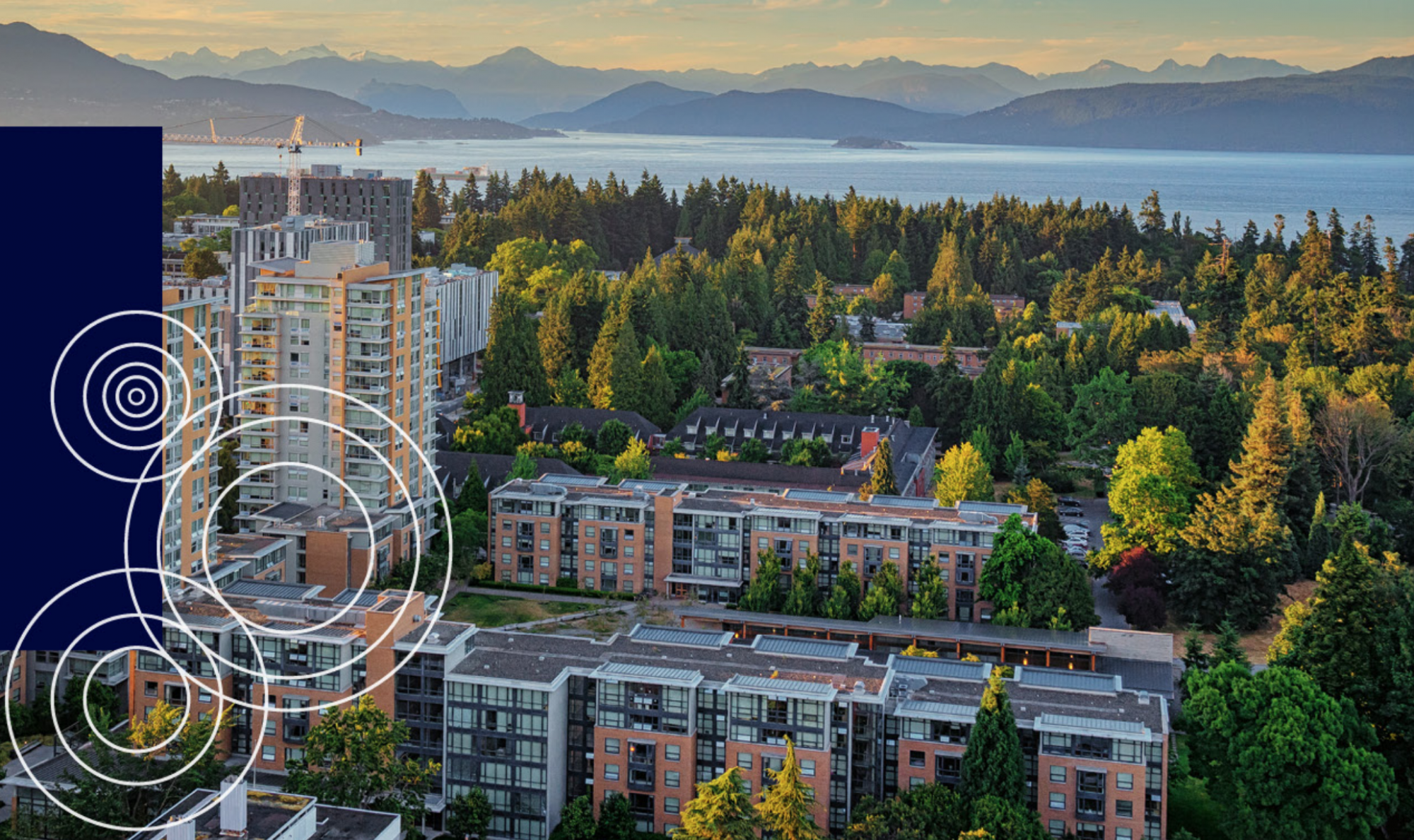Metro Vancouver water supply depends on the stock of natural capital of the Vancouver watershed. Vancouver raw water is from snowmelt and rainwater from the mountains. The raw water is of such quality that expensive preliminary treatment process similar to wastewater treatment process described later in this write up is eliminated. The availability of quality raw water for water supply is a global concern. In some countries and from the experience of the author, some cities water treatment plants have multiple unit processes of larger scale of the wastewater treatment process described in this paper due to poor quality raw water available to meet water needs. However, questions needing answers are: what is the value of the Vancouver water shed? Could it be valued at combined valuation of water supply and wastewater collection and treatment system’s performance level that return all used water to standard and quality taken from nature? Lastly the write up briefly address inter-dependency of systems in order to set the stage to appreciate systems thinking; and need to preserve our natural capital to maximize our ecosystem benefits.
 Figure 1: Greater Vancouver Watershed
Figure 1: Greater Vancouver Watershed
The Water Supply System
Vancouver watersheds are protected mountain watersheds covering an area of approximately 60,000 hectares. The system itself comprises six mountain storage lakes, five dams, two major water treatment facilities; over 520km of large diameter transmission mains, 25 storage reservoirs, 19 pump stations and 8 re-chlorination stations (McMahon J, 2018). Figure 2.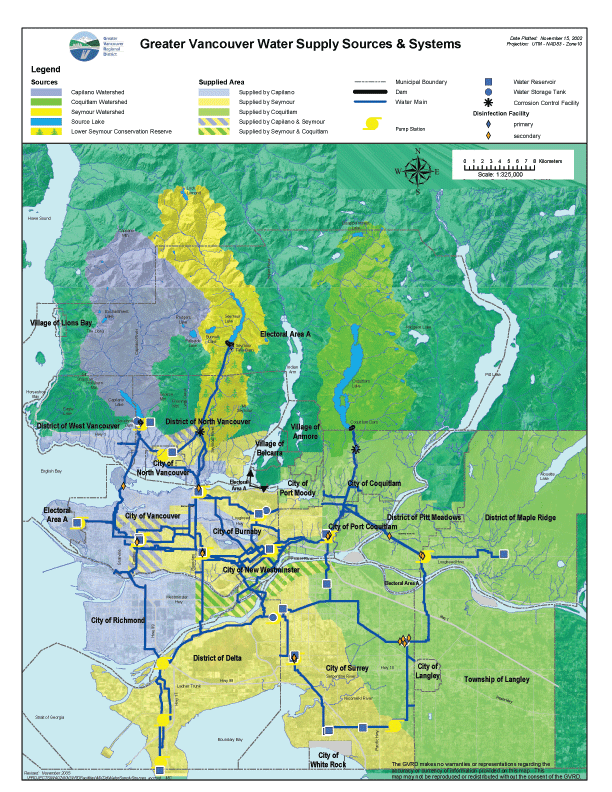 Figure 2: Water supply: Sources and Distribution
Figure 2: Water supply: Sources and Distribution
Water Supply & Distribution: The regional water district department provides large scale trunk transmission and treatment systems for potable water and coordinate with member municipalities. Figure 2, The municipalities take responsibilities for the reticulation systems and consumer connections (households, commercial and industrial uses). Figure 3. Hence Metro Vancouver water services department is able provides clean, safe drinking water through its member municipalities for 2.5 million residents in the Lower Mainland (McMahon, J; 2018; (“Metro Vancouver _About Us,” n.d.). 
Figure 3: The municipal dimension: Water to your home
Environmental Health & Sustainable Water Use
Wastewater Collection, Treatment & Disposal: The sewer collection include the sewer catchment areas, sewer mains, sewer pump stations and wastewater treatment plants. These facilities and systems components of the wastewater systems comprise of 530km of trunk sewer; 33 pump stations. Figure 4.
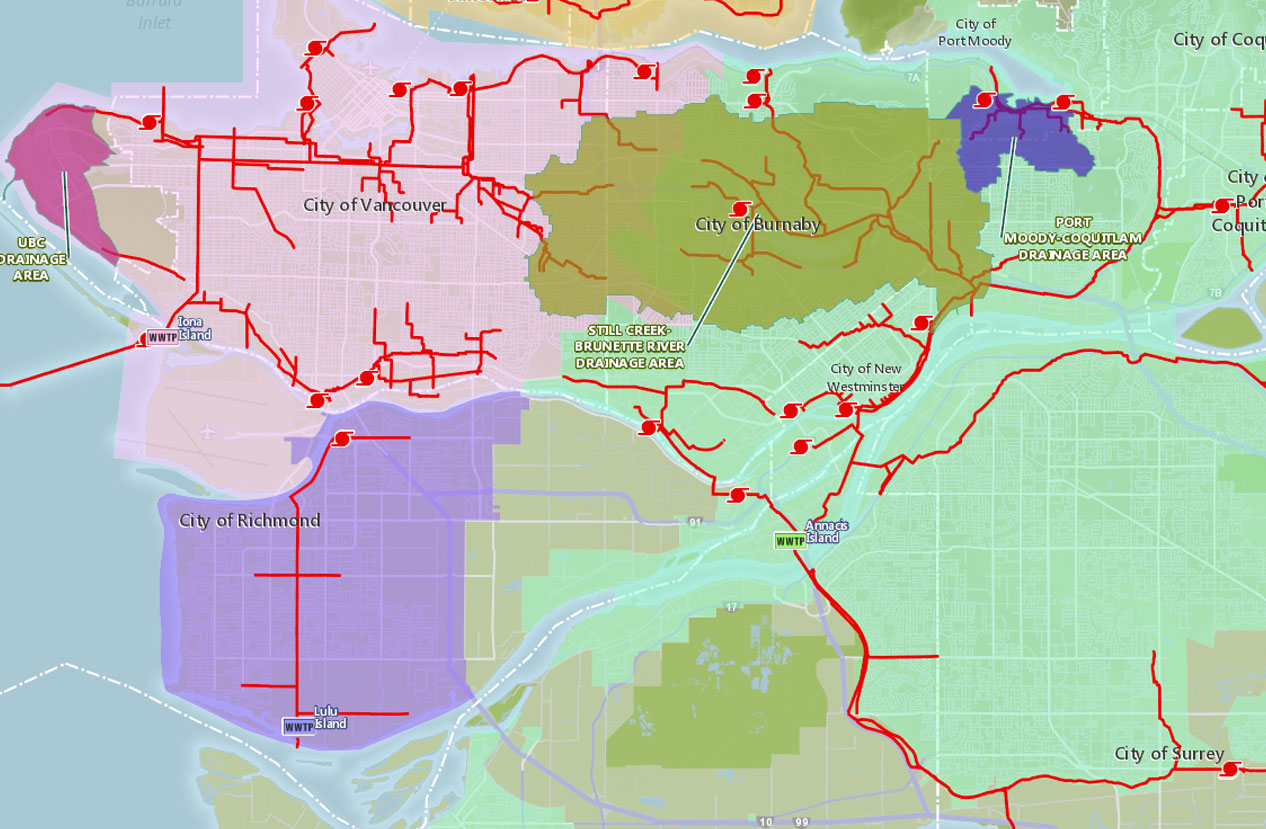
Treatment Plants: Five waste water treatment plants. Lions gate and Iona-primary treatment; while lulu, Anancis and NW Langley include secondary treatment processes (McMahon J, 2018). Figures 5. The Anancies wastewater treatment plant is the largest of the five with a 350MLD capacity; occupying 51 hectares; Design Population of 1million (Mayer, C; 2018).
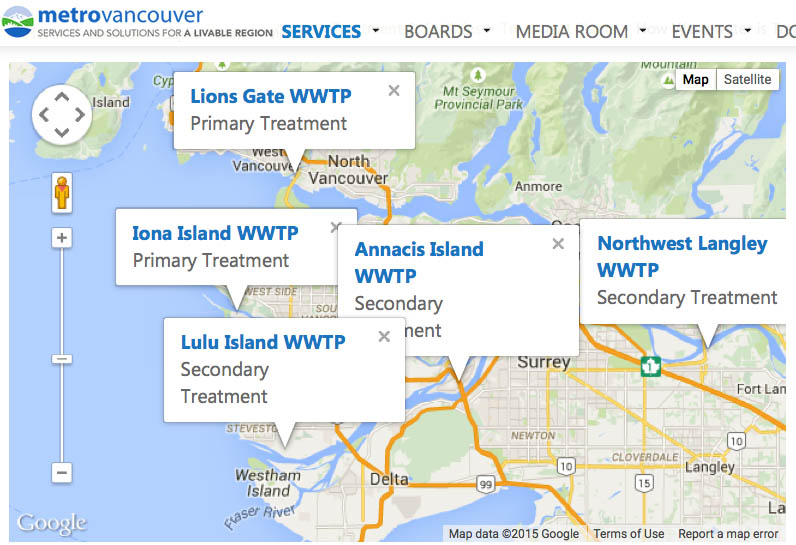
Wastewater Treatment Process ( Case study: the Anancis wastewater treatment plant: Video: https://vimeo.com/217633801 -CTRL click to play video)

Industrial are pre-treated at source to acceptable standards before they are received into the treatment plant. As a case study we use the The Anancis wastewater treatment comprises of two-unit processes: primary and secondary treatment processes. The primary process comprises of receiving the wastewater from the trunk main into the treatment plant; then screening and grit removal; settling. Debris from screening and grit removal are dewatered and sent to landfill (Mayer C, 2018). The secondary unit process extended the treatment wastewater process through biological process of filtration and clarification and sludge digestion. Figure. 6 (Morales, n.d.). Through the secondary process a higher quality effluent is achieved for discharge into the river. Figure 6 is the treatment process of the Anancis plant as observed from the field tour. A retrieved online video of the Anancis wastewater treatment plant operation with our field trip facilitator Craig Mayer is embedded: Video: https://vimeo.com/217633801 -CTRL click to play video (Vancouver, 2017)
Inter-dependencies with other Urban Systems
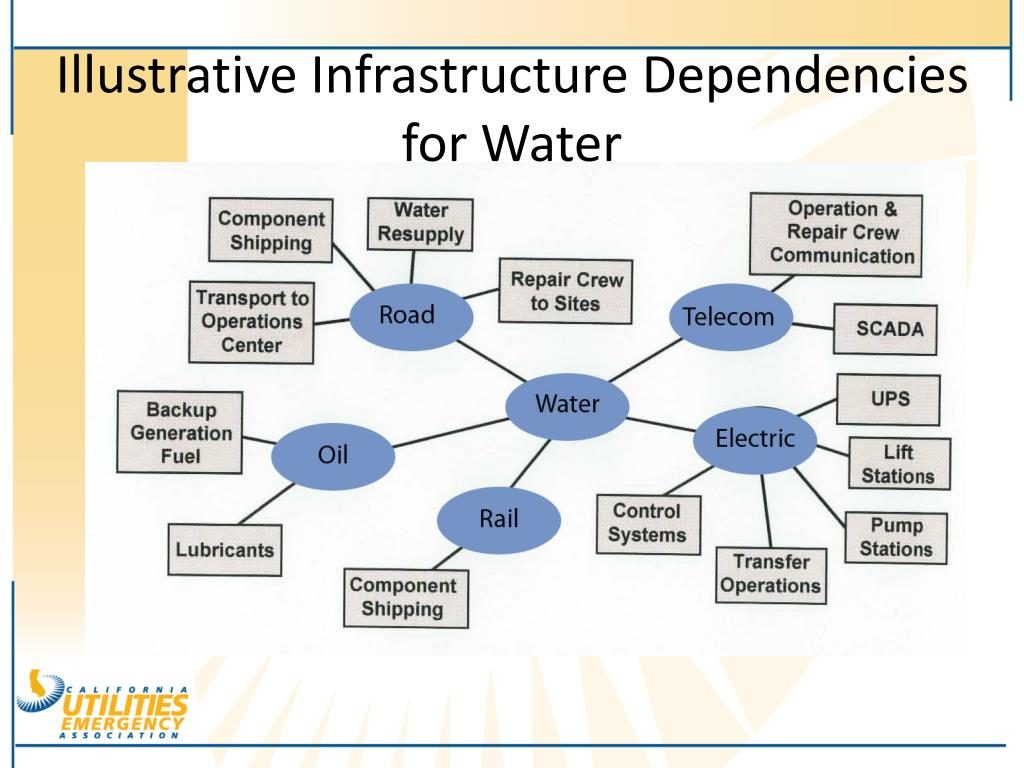
Takeaway and Questions
Vancouver is naturally endowed with good source of water supply. Not all wastewater treatment plants in Vancouver has tertiary treatment process like the Anancis plant. Some effluent quality standards discharged remain below standard- aggregate wise, water returned is less in quality than water taken from nature. While it is natural to assume that the rest of the purification process will be taken over by nature; we should be mindful that there was no contamination of our natural water courses when we harvested it from the watershed. It is proper for Vancouver to ensure all effluent discharge is of substance and quality to that taken from nature before discharge. The interdependency of our infrastructure systems as show above also show how we are entirely dependent on nature from which it is critical to preserve our natural capital. In so doing, how do we ascribe value to benefits derived from our ecosystems? What budgetary allocation should be made for example to preserve the Vancouver watershed? What is the valuation of this natural asset? Should it be assessed as the equivalent capital cost capital cost and operation cost of wastewater supply system at current dollars or equated as size of the Vancouver economy?
REFERENCES
- Drinking Water Management Plan June 2011.pdf. (n.d.). Retrieved from http://www.metrovancouver.org/services/water/WaterPublications/DWMP-2011.pdf
- Mayer C, 2018: “Authors Notes from Field Trip/Tour of Anancis Wastewater Treatment Plant, June 19, 2018_ Master of Engineering Leadership (MEL) Student, UBC
- McMahon J, 2018: Utility Systems – Liquid Waste and Water Metro Vancouver June 19, 2018” Field Trip Ppt Presentation (Master of Engineering Leadership (MEL) Student, UBC.
- Morales, M; 2011: Wastewater Management in Metro Vancouver http://tonydorcey.ca/597/11WastewaterMetro.pdf. Retrieved 6/26/2018-10:57:52
- Metro Vancouver _About Us; 2018: ) Retrieved June 29, 2018, from http://www.metrovancouver.org/about/Pages/default.aspx
- Penn, Michael R; 2012: Introduction to Infrastructure: an introduction to civil and environmental engineering John Wiley & Sons Inc. 2012 ISBN 978-0-470-41191-9 (pbk)
- Sewer Services: https://gis.metrovancouver.org/maps/Sewer Accessed 2018-06-27 01:00:38
- Vancouver, M. (2017). Anancis Waste Water Treatment Plant Tour – Oct 2012. Retrieved from https://vimeo.com/217633801
- Water for Life’ 2005-2015: International Decade for Action “Water for Life” 2005-2015. Focus Areas: The human right to water and sanitation. (n.d.). Retrieved from http://www.un.org/waterforlifedecade/human_right_to_water.shtml
END
